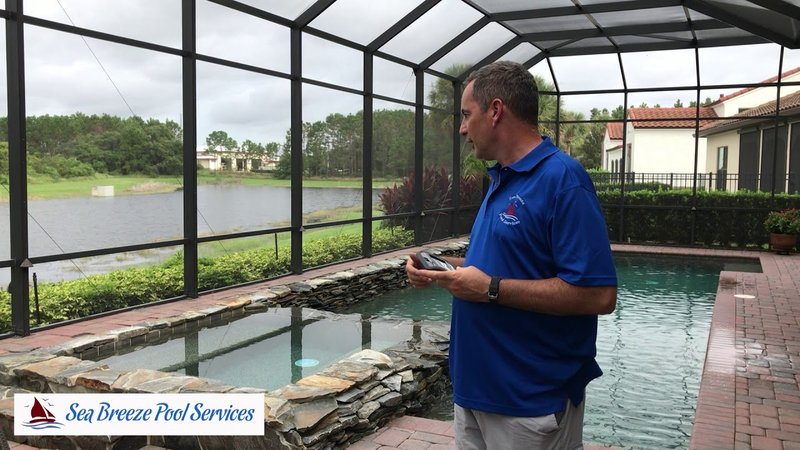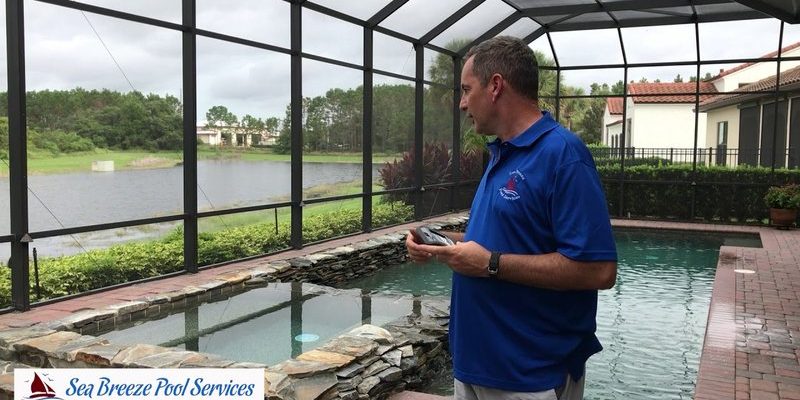
Let’s be real: pool automation sounds a lot fancier than it feels when you’re knee-deep in manuals and troubleshooting. Whether you’re eyeing the Hayward AquaPod or handling the wireless remote that came with your OmniLogic system, you might wonder if these devices can command more than just one part of your pool. So, let’s grab a coffee (or, more likely, a poolside lemonade) and dive into what’s possible with a Hayward pool remote, what “zones” even mean, and the ins and outs of making it all work without pulling your hair out.
What Does “Multiple Zones” Mean for Hayward Pool Remotes?
Before we get too technical, let’s break down what “zones” actually are in the world of pool automation. Imagine your backyard as a house with several rooms. In this case, each “room”—the pool itself, the spa, the lights, the waterfall, maybe even the backyard speakers—counts as a different zone. When someone asks about controlling multiple zones with one Hayward remote, they’re basically hoping to switch between these “rooms” without needing a separate controller or app for each one.
With Hayward’s automation systems, zones aren’t limited just to pool or spa. You might also have zones for:
- Pool lights or color-changing LEDs
- Water features, like bubblers or fountains
- Heaters for the pool or spa
- Chlorinators or sanitation systems
Each of these can be programmed as a *zone* if your control box and system allow it. The trick is making sure your remote—like the popular Hayward AquaPod or the OmniLogic remote—can talk to, recognize, and switch between all those zones seamlessly. Trust me, nobody wants to be sprinting between devices when the spa is boiling and the pool’s freezing.
How Hayward Pool Remotes Communicate with Zones
Here’s the thing: not every remote works the same way. Hayward’s remotes typically use wireless signals (sometimes via RF, other times via Wi-Fi) to send commands to your pool’s control panel. The panel itself is the brains of the operation—it’s where each zone is set up, named, and programmed. So, the remote is kind of like your pool’s personal assistant, taking orders and passing them along to the boss.
Depending on your system, the pairing (or syncing) process can vary a lot. For example:
- The Hayward AquaPod 2.0 is designed to work with ProLogic pool control systems and can control multiple zones if your control box supports them.
- The OmniLogic remote is even more powerful, and with the right code or setup, it can handle up to a dozen zones or more—all from the same device.
But there’s a big caveat: if your zones aren’t set up correctly at the control panel, your remote won’t magically detect them. Sometimes, you’ll need to dive into the manual and either pair new zones or reset the link between your remote and the control system. Honestly, it’s not always as simple as plug-and-play, so a little patience goes a long way here.
Pairing and Syncing Your Hayward Remote for Multiple Zones
You might be wondering, “Do I need a special code or device to sync my Hayward remote with all these zones?” The answer is: sort of. Here’s how the process generally works, step by step:
- Access the pool control panel (usually in your equipment pad or garage).
- Set up all desired zones—label them clearly within the system (like “Spa Jets” or “Waterfall”).
- Put the remote into sync or pairing mode. On the AquaPod, this usually means holding down certain buttons until it flashes or beeps. The OmniLogic uses a touchscreen interface to walk you through pairing.
- Follow the prompts on the remote and panel to complete pairing.
- Test each zone by toggling controls from the remote—switch lights on and off, start the heater, or activate water features.
If something doesn’t work, don’t panic. Most pairing problems come from weak signal, low battery, or zones not set up properly at the main panel. Sometimes, you’ll need to reset the remote and try again. If you ever lose connection, the Hayward troubleshooting guide usually recommends checking batteries, signal range, and making sure the control panel isn’t locked.
Why Use One Remote For Multiple Zones?
Let me explain why people care about this in the first place. Pool owners, especially those with fancy setups, value **convenience** above all else. Who wants to juggle three remotes (one for the spa, one for the pool lights, one for the heater) like a circus act? Having a single Hayward remote that controls every zone means less clutter, fewer things to lose, and—let’s be honest—a stronger sense of being in control.
Here are a few more reasons this matters:
- Efficiency: Adjust everything at once, like switching the pool from “party mode” to “night mode.”
- Simplicity: Less confusion for guests or family members.
- Troubleshooting: When something goes wrong, you only need to figure out one device—not five.
- Integration: Many Hayward remotes work with smart home systems, which makes multi-zone control even more appealing.
It’s like having a universal remote for your whole backyard, rather than hunting for the right button every time you want to take a dip or kick on the hot tub.
Limitations and Common Pitfalls with Hayward Remotes
Honestly, as magical as a universal pool remote sounds, there are some things to watch out for. First off, not all Hayward pool remotes are created equal. Entry-level systems might only handle a pool and spa, not a dozen fancy zones. If your setup has lots of different features, make sure your remote—and, more importantly, your **pool control panel**—can actually support that level of complexity.
A few more potential headaches to keep in mind:
- Signal Range: Wireless remotes only work within a certain distance. Thick walls or outdoor clutter can kill the signal.
- Battery Life: If the battery starts to die, commands can lag or fail to reach the control panel.
- Firmware Updates: Sometimes you’ll need to update your system to control new kinds of zones. Without the newest code, certain features just won’t show up.
- Compatibility: A remote for one Hayward series (like AquaPod) usually won’t work with a completely different system (like OmniLogic) unless it’s specifically marked as compatible.
If you find yourself constantly troubleshooting or resetting, you’re not alone. Many pool techs recommend checking your wiring and network setup at least once a season.
Comparing Hayward Remotes to Universal Pool Remotes
You might be tempted by universal pool remotes, and I get why—the idea of a single device that controls everything, from every brand, is appealing. But in practice, Hayward remotes have a couple key advantages when it comes to handling multiple zones:
- Full Feature Access: You get all the bells and whistles specific to your Hayward system—programmable schedules, temperature presets, special lighting scenes, etc.
- Stable Pairing: Sync, code, and reset processes tend to be smoother since the remote was designed for your specific equipment.
- Support and Updates: Hayward regularly updates their firmware with new features and bug fixes, which might not be the case with a generic universal remote.
That said, if you have a truly mixed-brand setup (let’s say a Pentair heater and a Hayward control panel), a universal remote might be your only option—just expect some quirks and limited multi-zone functionality.
How To Troubleshoot When a Hayward Remote Won’t Control All Zones
Let’s say your remote is synced, but it’s only working for the pool—nothing happens when you try to kick on the spa or waterfall. Here’s how I’d approach it:
- Check the zone setup: Go into your control panel menu. Make sure all zones are enabled, named, and assigned to the correct relays.
- Verify pairing: Sometimes the pairing process didn’t finish, or the remote lost connection. Try putting the remote back into sync mode and repeat the process.
- Reset the remote: Many Hayward remotes have a reset option (often found in the settings menu). This clears out bugs or network hiccups.
- Inspect batteries: Even if the remote powers on, low battery can mean weak signals. Swap in fresh batteries and try again.
- Update firmware or software: If your control panel allows updates, download the latest version. Sometimes missing code means missing features.
Most issues come down to pairing, battery, or signal—not some mysterious hardware failure. Take it slow, and remember: better to spend a few extra minutes now than to be stuck with a lukewarm spa later!
Can Multiple Remotes Be Used for the Same Zones?
Here’s a fun twist: what if you want two or more remotes controlling the same pool zones? Maybe you want one for upstairs, one by the grill, and one in the pool house. Good news—most modern Hayward systems let you pair multiple remotes to the same control panel.
Each remote will control any zone that’s been set up on the main control box. The only catch is, if two people try to change the same zone at once (like fighting over which color the pool lights should be), the last command wins. There’s no “priority” order—the system just listens for the most recent input.
For families, this can be super handy. Everyone can have their own remote, so you aren’t stuck hunting for that one device that always disappears after a party. Just remember to sync each new remote through the control panel, follow the pairing code process, and check that all remotes are recognizing the correct zones.
The Bottom Line: Yes, One Hayward Pool Remote Can Work Across Multiple Zones
So, what’s the real answer? In most cases, **one Hayward remote absolutely can work across multiple zones**—as long as your system is set up to support those zones, and you’ve followed the pairing and syncing steps. Whether you’re toggling lights, heating up the spa, or cranking up the waterfall, a single remote can handle it all with ease.
Here’s the catch (because there’s always a catch): your success depends on the capabilities of your control panel, the compatibility of your remote, and making sure you’ve synced everything correctly. Sometimes you might need to reset, re-pair, or update firmware, but once things are set up, multi-zone control is everything you hoped for—and honestly, it’s a small luxury that feels massive when you’re flipping on the backyard lights with just a click.
If you’re ever in doubt, check the Hayward compatibility charts or call a local pool tech. They’ve seen pretty much every weird setup imaginable. In the end, the right remote can put total control back in your hands—freeing you up to enjoy your pool, instead of wrestling with remotes or running back and forth between different control boxes.
